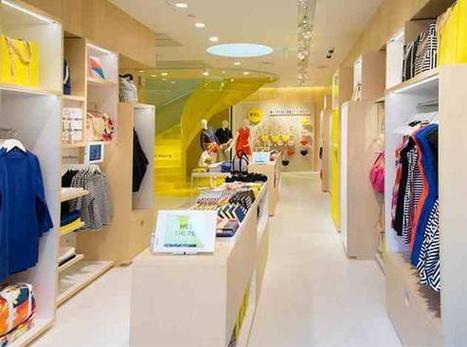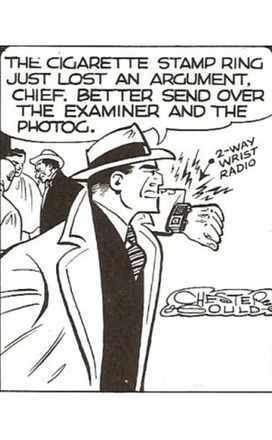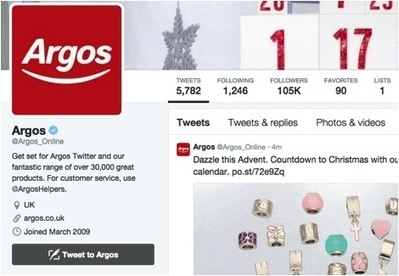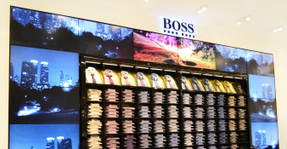 Your new post is loading...
 Your new post is loading...
How much is your customer worth?
One approach would be to re-focus acquisition strategy based on the Customer Lifetime Value or CLV. According to the 2015 RJ Metrics Benchmark report, a new e-commerce customer is worth, on average, $154 in their first year. This number varies by type of retail. For instance, the categories of housewares, food and drugs tend to be above this average.
What is more interesting is that only 32 percent of these new customers are likely to make a second purchase in their first year. The report also reveals that the top 1 percent of customers are worth 18 times more than the average customer, which equals about $2,772.
Armed with this information, an e-tailer can easily calculate ROI on programs targeting new customers vs. programs targeting your biggest fans—the top 5 percent....
Most consumers (85%) globally say that they have used their smartphone in-store, according to the DigitasLBi Connected Commerce study.
This is an increase from 72% just a year ago.
And it’s not only using a smartphone in a store but the rather the impact it’s having.
The majority (55%) of smartphone users say the Internet and smartphones have changed the way they shop in a store.
Perhaps more significantly, 77% of Internet users have been influenced by mobile during the purchase process....
ey first came to the world’s attention 12 months ago with the launch of Apple’s iBeacons in the US. This launch was closely followed by another defining milestone: the Regent Street project in the UK, a first of its kind now in full swing.
Soon after, as I was talking to two outdoor media owners, they were telling me about their plans to bring the technology to the Australian market – both understandably racing to be the first in market given its huge potential for highly-targeted mobile marketing.
Plenty has been written since on how the technology works and its marketing possibilities. For my part, I am genuinely excited about its many benefits. Yet there are some drawbacks to be mindful of also....
One of the bigger implications of our new mobile world is the hurt it is putting on the retail supply chain.
There used to be a day when the only way a consumer could get a product from a specific brand was to find it in a store. That isn’t true anymore. With so many brands now reaching the consumer directly and the expectations of the consumer reaching orbital requirements, what will happen to the legacy supply chains still being used by most retailers today?
RSR released a report on the impact that mobile is having on the supply chain and, in case you didn’t know, it has been disruptive and destructive. More change in retail = more opportunity for differentiation....
Between the confluence of the Web and e-commerce and the rise in hours at work for U.S. workers, brick-and-mortar visits are becoming worryingly infrequent. Online shopping is rapidly overtaking high-street sales with the U.S. Department of Commerce spotting a 3.4% quarterly pickup in e-commerce sales compared to 0.6% for brick-and-mortar retailers during the fourth quarter of 2013.
However, thanks to modern technology, traditional retailers now have a chance to fight back. Strategy consulting firm Control Group put together a thorough report examining several emerging trends in retail technology. Especially, state-of-the-art technologies that make dynamic pricing for brick-and-mortar retailers could indeed enable them to turn the tide in the battle of clicks versus bricks....
A look at a few promising items on the "bleeding edge" of technology that could very well be the "next big thing" in local: wearables, multi-touch attribution, and visual search.
Chapter one of local was centered on business listings’ identity and ensuring that consumers seeking businesses could simply find them. Interestingly, this behavior is very similar to the early days of portal-based Internet search, where consumers used resources to "find" information, pricing, availability, etc. of items that they already knew about. This is fundamentally the definition of directional marketing, connecting buyers with sellers.
As local and mobile search continues to increase and evolve, we are seeing greater adoption of discovery-based searching. These "searcher" and "shopper" type searches help consumers research unknown or partial categories and products in more of the awareness and preference forming portions of the consumer’s discovery path....
Smartphone savings programs, in-store Wi-Fi, and better customer service are some of the ways offline retailers are leveraging their advantages.
E-commerce businesses have upended the retail industry and put bricks-and-mortar companies on the defensive.
But now, many offline retailers are moving to capitalize on their offline advantages. Retailers are actively harnessing a trend that's actually far more popular than online buying, and always has been — 'reverse showrooming' — when people research products online and then ultimately buy in-store....
|
There’s a tsunami of change coming toward the retail business environment and interaction with the customer that may turn today’s approaches and strategies in completely new directions, impacting everything from store design to communication with consumers.
It’s termed “living services,” and according to a new Accenture report it will let retailers deploy less intrusive customer experiences while boosting customer engagement and fostering stronger and faster sales.
The report provides information on how some brands are already putting ‘living services’ to work within the retail spectrum. One is example cited is how fashion retailer Nordstrom is determining store merchandising now on a weekly basis through tracking and gauging consumer product interest using the social network tool Pinterest.
“Living services will allow retailers to move away from the industry’s standard scenario of bombarding shoppers with offers on arrival at a location. By working with Pinterest Nordstrom is also providing staff with an iPad app to make it easy to show customers trending products and merchandise live,” stated the report.
The technology enabling “living services” is now mature enough for brands to create and deliver them at scale, the report said....
Consumers today conduct a great deal of research about the products they are buying and brands are being asked to fulfill a multitude of informational needs.
Argos, a UK-based consumer goods and ecommerce retailer, is exceptional in that they maintain an active presence operating across a large range of touchpoints, both digitally and via traditional media. This case study takes a close look at how Argos reaches, influences, and engages consumers as they go through their purchase journeys....
Consumers want more from brick-and-mortar stores than they can get online, where shopping is faster, easier and often cheaper, members of a panel on retail. They're looking for human interaction, said Rachel Shechtman, founder of Story, a boutique in Chelsea. "The future of retail is about entertainment and community," she said. "It's really about the surprise and delight factor."
Her shop, Story, experiments with retail as a media channel, and is managed like a magazine, according to Ms. Shechtman. It has sponsorships, like magazines have ads, and it's completely redone every few weeks with new products and designs. Most of the shop, Ms. Shechtman says, is pure experience, with a smaller portion where customers can shop....
A few years ago, two marketing professors conducted a study involving jams. It’s since become a landmark. The researchers set up a tasting booth in a supermarket and offered jams to customers. On one Saturday, they offered 24 flavors. On the next Saturday, they offered 6 flavors.
What happened? The results are nuanced, so pay attention.
When 24 jams were available, 60% of the customers stopped for a taste. When 6 jams were available, 40% of the customers stopped for a taste. So it’s better to offer more options, right?
Not really. Of the 60% who tasted one of 24 jams, 3% made a purchase; of the 40% who tasted one of 6 jams, 30% made a purchase. Here’s the key takeaway: 31 people purchased jams when they had 6 options, and 4 people purchased jams when they had 24 options. That’s nearly an 8X difference.
In other words, when you offer more products for sale, more people will visit your store, but fewer people will make a purchase. And as great as it is to get lots of visitors, your sales are what matters.The researchers suggest that when there are too many options, customers get into a state of “choice overload,” or “analysis paralysis.” Sometimes when choices are too great, people choose nothing at all....
...Millions are spent on content creation and propagation across many channels and media. Multi-channel marketing concepts can be fitted to this alternate use case by helping brand marketers understand the contribution of content investments to an engaged audience of individual consumers. It’s like placing iBeacons on branded content such that marketing spend can be optimized around the messaging that connects best with consumers. Metrics such as open rates and website visitor dwell times become indicators of content quality comparable on a relative basis.It takes a blend of informed creative brilliance and technology enablement to pull this off – key is informed.
To these ends, it’s essential to reign in the insights digital channels capture to fuel a profile of individual consumers that lives, grows, and evolves just like the person it describes. These insights help both agencies and brand marketers inform brand storytelling with knowledge of their consumers beyond superficial characteristics. In this way, you could say consumers help write the story....
Retail technology is rapidly evolving to create a more convenient, fun and immersive in-store and online experience. Here are ten trends to look out for in 2014.
Though there’s no doubt we’re still a nation that needs to be careful with its cash, the dark clouds of recent austerity are starting to float away to reveal a more optimistic, more promising future.
We’re not out of the woods yet, for sure, and the vast majority of people still feel we’re in a recession, but market confidence is starting to return and the masses are beginning, albeit cautiously, to dip into their wallets again.
This change in consumer attitude is also being complimented by the raft of new technology designed to make the shopping experience more accessible, convenient and fun. Peaks and troughs and trends are prevalent in practically every element of society – and retail is absolutely no different....
The way retail customers get their information is changing. Here's how one company helps them make the most informed decisions.
The retail landscape is as competitive an environment as any in the business world. Retailers regularly explore new and innovative ways to attract consumers' attention and stay one step ahead of their rivals.
Above and beyond any traditional methods of luring customers, advancing in-store technology has become a clear standout. Whether it's LCD screens or LED panels, touchscreens, gesture-based software, or 4D projection, retailers now have a plethora of options when it comes to delivering content to consumers through digital installation. Of course, none of these options would be useful in today's world if they didn't have the ability to seamlessly integrate with a consumer's social-media applications and deliver a customized shopping experience....
|



 Your new post is loading...
Your new post is loading...

























Very insightful and thought provoking article
Una vista para el comercio